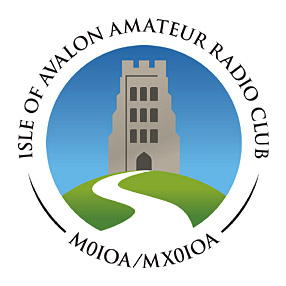Teaching Joint Services Voice Operating Procedure to Members of the ATC
In my last article on Worked All Britain , I mentioned that I progressed to Amateur Radio from my time in the Air Training Corps. In this article, I will outline my radio related time in the ATC and what I taught to the cadets.
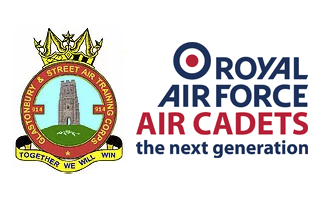
(Glastonbury and Street) Squadron, ATC
In The Beginning
As a Cadet at 914 (Glastonbury and Street) Squadron, I had to undertake some basic training in radio in order to pass my First Class Cadet classification. This training was known as ACP31 Section 6. It covered the very basics; Phonetic Alphabet, Callsigns and the basic structure of a call.
After this, radio training was given on the squadron as just something to do when there wasn’t much else to do. Although I do remember going on two activities providing communications, once for the Scouts whom were undertaking a night hike in and around Shepton Mallet and once for a pony club somewhere local.
The Next Stage
When I reached the lofty rank of Cadet Flight Sergeant and had turned eighteen, the chance came up to attend a weekend course VHF/UHF operation. This course was held at Pellew House (named after the Naval Officer, Sir Edward Pellew 1st Viscount of Exmouth RN 1757-1833) at Wyvern Barracks in Exeter. Devon and Somerset Wing HQ was also located at this small army camp. The course was a day of theory followed by a day of practical exercises and assessments.
When I reached the top rank of Cadet Warrant Officer, I was invited to join the wing radio team. This team consisted of Squadron Leader John Rooke RAF VRT RTd as Officer Commanding, a Civilian instructor the name of whom temporarily escapes me and Warrant Officer ATC Phil Sturges. I was given the task of teaching groups on a camp known as Griffin that was held in Cornwall at Penhale Army Training Camp. Most of this week is lost in my memory as it was quite uneventful except for a 24hour guard shift that sodded up ability to teach the next day.
At the age of twenty, I applied, was interviewed for and was awarded my Sergeant stripes as an adult member of staff. Over the next year I assisted on two weekend courses being told I would then take over the Foundation licence training on these weekend camps.
Development
I believed the course that was being taught was dull. I had noticed cadets nodding off whilst watching videos from 1943 that went into too much technical detail.
After I attended a course aimed at adults teaching radio to cadets at Fort Blockhouse in Portsmouth, I thought I might mix things up a bit.
I wrote a basic outline of a weekend course in Microsoft PowerPoint, which I then presented to the teams Warrant Officer (AWO). He tore it to shreds and I mean he basically threw it in the bin. BUT he agreed that we needed a new lesson format.
So on the next Griffin camp we used the lessons we had to develop a new one. We had two sessions a day for seven days. Each session we taught the same lesson to a different group of around twenty cadets. The content was essentially the course we would teach over the weekend minus the exams and a few of the more technical lessons, although we covered these if we had time.
This allowed us to develop and test our lessons to a format that we could jump straight in and teach it to a high standard on the next actual course we ran.
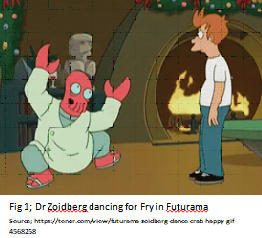
Both the AWO and I also developed our personal teaching method during this time and gelled as a team. This actually made it fun for both of us and the cadets. Radio can be a REALLY boring subject for those who have no interest at all, so we had little games. If a cadet didn’t show they were listening when asked a question, they would be made to run around the building like Dr Zoidberg (from Matt Groenings Futurama) and on occasion the whole group would have to do it. On one camp a year or so later, this made a group of Army Cadets in the next building jealous of our cadets’ instructors apparently (yes, there is smugness in that sentence).
The lessons, by the end of the week had essentially turned into a comedy performance, the AWO and myself as the comedians; telling jokes and generally making a fool out of ourselves. It worked and many of the cadets we had seen on camp, then came to the course where they could get certified. Of course, they ended up seeing the same show… just with a few extras and an exam!
Content
What did we teach the cadets? Well this consisted of two areas; Joint Services Voice Operating Procedure (JSVOP) and EM Waves and their propagation.
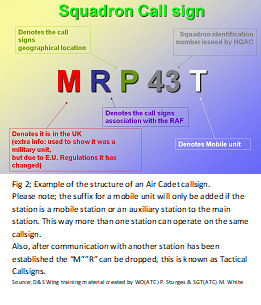
JSVOP
This is a massive subject, which took the best part of a day to teach! It is broken down into smaller manageable chunks. It starts with the very basics, the phonetic alphabet and RSVP or Rhythm, Speed, Volume and Pitch; essentially about how to utilise your voice to get the best performance of the radio. We then talk about Security of transmissions; including the structure of a call sign, Accuracy of information passed and the required disciplines to be used on the radio.
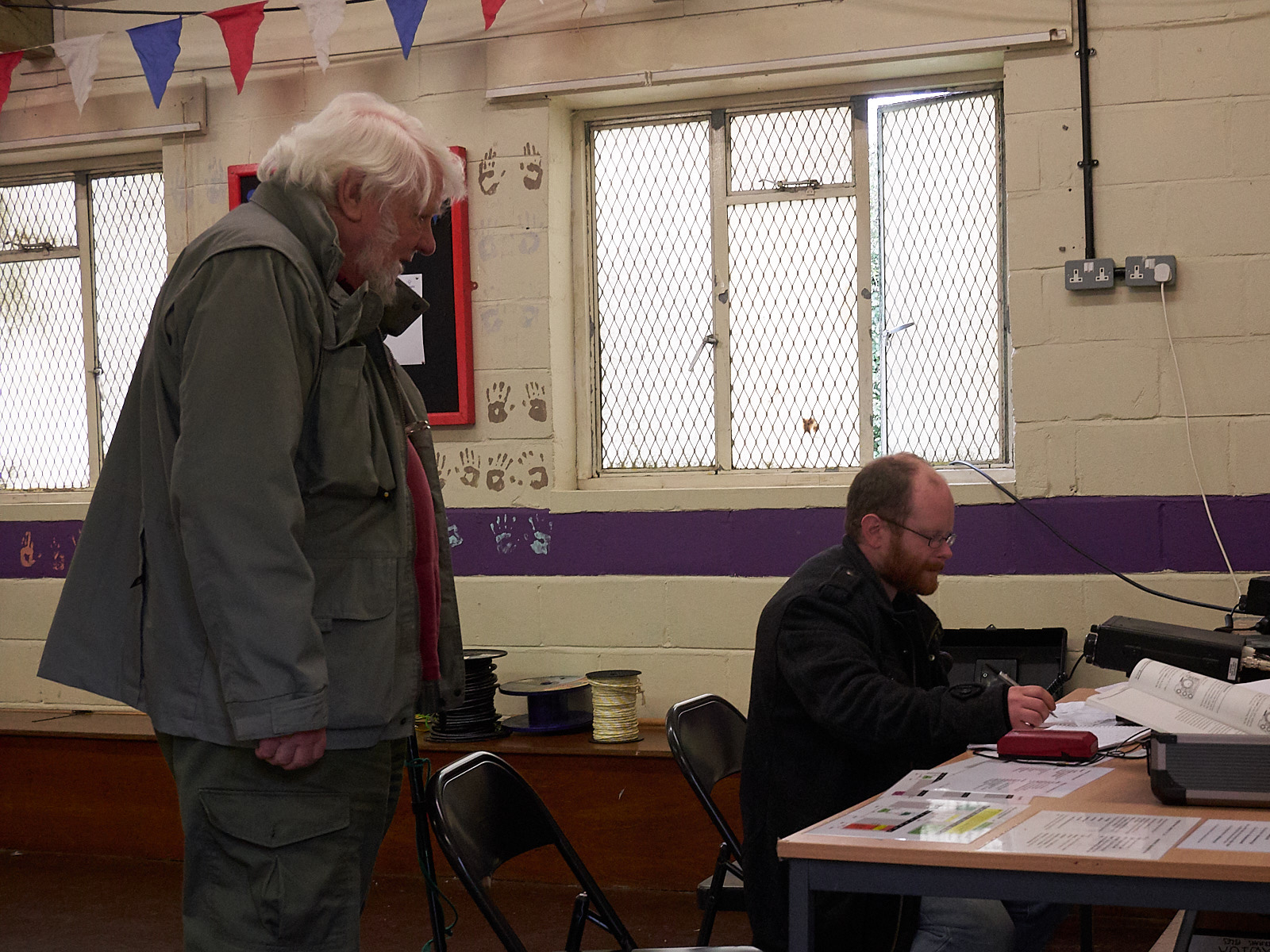
Following this we covered the cadet equivalent of RST reports, known as Radio Checks. If you have ever taken part in Exercise Blue Ham, you will know about how this differs to Amateur procedure. We then cover the structure of a call and what an amateur would call a QSO. Q-Code is not a thing in JSVOP.
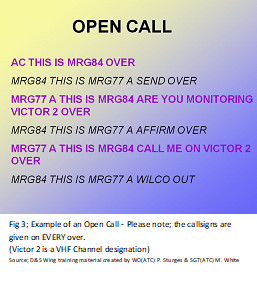
There are four types of call:
- Single; One station calling another.
- Open; one station call any others in range.
- Multiple; One station calling multiple specific stations.
- And Collective; One station calling all mobile stations under its own call sign.
Each would be taught with an example (see Fig 3.) After each type of call is taught, the cadets would then practice
Radio Networks
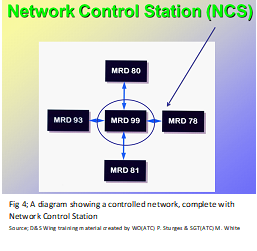
We taught two different types of radio network; a free net; whereby any station is free to talk to any station. And a Controlled net; where each station could only talk to the network control station (also known as an NCS). The cadets then had to write down a message and, in pairs, try to relay their message to every other team in the group. Once via a free net and once via a controlled net where staff members acted as the NCS. After this exercise, in future exercises each pair got a chance to operate as the NCS. When operating a free net, the cadets found it very difficult to pass their messages without doubling. Meaning the exercise took a long time and we often had to call an end to it before it was complete.
Relaying a Message
The cadets also needed to know what to do in the event that a station couldn’t be reached for any number of reasons. If operating on a large enough network, a message could be relayed through other stations. This was a very quick section, but very important as most cadet communication was done via VHF or UHF but they could be covering allot of ground with difficult terrain; particularly when on exercise. During this set of practicals we (the course staff) would pretend to be a taxi company or a take away delivery company on the air and it would really get on the cadets nerves. But it did lead nicely into the next subject.
Authentications
This is something that tends to only be done by uniformed services, in my experience anyway. I am happy to be corrected.
This allowed a station to confirm if another station was a genuine station or a pirate.
Different methods of doing this are used by different services. I had to give a lesson on a subject of my choice when I undertook my Senior Non-Commissioned Officer Training at RAF College Cranwell. The subject I chose was Authentications and the Course Warrant Officer, whom was ex RAF Regiment was horrified at the method the Air Cadets used. In the ATC there are four different ways of authenticating a station by asking them to;
- “Authenticate Alpha” – this is asking them their squadron number (Each squadron in the ATC, as in the RAF, have a number to identify them.
- “Authenticate Bravo” – This is asking them their squadron number in reverse
- “Authenticate Charlie” – Their Squadron Number plus the date
- “Authenticate Delta” – The number contained in their callsign plus the date.
If the station returned the incorrect authentication communication was then ceased and an instructor informed. At this point, the days training would come to an end as had the training for JSVOP on the designated weekend courses. The next morning after a large hearty breakfast in the mess hall (Large and hearty might be an exaggeration) we would move onto EM wave theory, I won’t go into that here as allot of it is covered in the Amateur radio Intermediate and Full Licence training. If anyone wishes, I can do a write up on this subject. After lunch the cadets sat their theory examinations; this was a godsend for the AWO and myself as normally there was a parade mid afternoon; but we had to mark exams, so couldn’t take part.
But for now, the Officers or Warrant Officers & Sergeants Mess beckoned… it was beer o’clock.
The Air Cadet Foundation Course did cover 99.9% of the relevant information in our Foundation course and aspects from both our Intermediate and full syllabus. It allowed cadets to operate semi supervised by staff. The VHF/UHF Full Licence would go into much greater detail on certain aspects, but both these licences were essentially an operator’s licence, with some basic maintenance and physics thrown in. The full level allowed the cadet to operate unsupervised.
I left the ATC for a number of different reasons, I did do a stint with the Sea Cadet Corps, but that really wasn’t for me. I miss this particular course and the staff with which I used to work as well as the cadets. We had some great times and the experiences lead me to undertake my Amateur Radio Foundation Licence and have a hand in starting the Isle of Avalon Amateur Radio Club. I am now in the Scouts; I am looking for an opportunity to teach the Foundation Licence within our district, but this is something to develop in the future.
